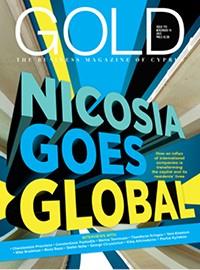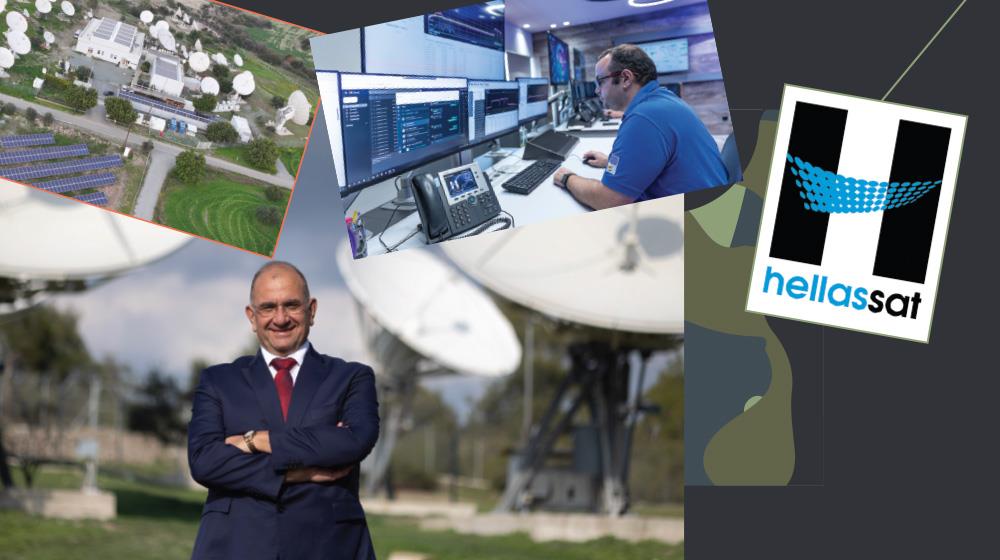Unlike many nations that rely on external satellite providers, Cyprus, through Hellas Sat, has a sovereign and independent space-based communications infrastructure, which is a major asset for secure military communications, national security and collaboration with allied defence forces, according to the company’s CEO, Christodoulos Protopapas.
Hellas Sat owns and operates three geostationary satellites and operates two advanced teleport facilities in Greece and Cyprus. These assets are trusted by defence agencies for a wide range of critical missions, including intelligence, surveillance and reconnaissance (ISR) for UAV operations, battlefield communications, Special Forces, border control, first responders, communication on the move (COTM) and naval operations. Its teleport facilities also provide comprehensive, end-to-end solutions, host critical infrastructure and offer uplink services to various satellites, tailored to specific mission needs.
Our part of the world has long been defined by conflict and uncertainty. Why do you believe that it has now become important for Cyprus to invest in the defence sector?
Cyprus has always faced geopolitical challenges due to its strategic location at the crossroads of Europe, the Middle East and North Africa. In today’s security environment – marked by increasing regional instability, cyber threats and the growing role of space in defence – investing in the defence sector is not just important but essential. Hellas Sat plays a critical role in strengthening Cyprus’ defence capabilities by providing secure and independent satellite communications. By ensuring that Cyprus has a sovereign and secure satellite communication infrastructure, it reduces reliance on foreign networks. This is crucial for military operations, intelligence sharing and government coordination, especially in times of crisis. Satellites are essential for real-time intelligence gathering, surveillance and reconnaissance (ISR) and Hellas Sat supports Cyprus’ defence sector by enabling ISR capabilities for border monitoring, maritime security and early warning systems. Beyond military applications, Hellas Sat provides critical satellite-based emergency response services, ensuring communication during natural disasters or crises, where terrestrial networks might be compromised. Given these factors, Cyprus’ investment in its defence sector must include strengthening its space-based capabilities. By leveraging Hellas Sat’s infrastructure, Cyprus can enhance its national security, reinforce its strategic autonomy and ensure resilience against emerging threats in an increasingly volatile world.
While European defence R&D spending increased significantly – it reached €11 billion in 2023, more than doubling the amount spent in 2016 – the US and China outspent EU member states. How does this spending disparity impact your ability to innovate and compete on a global scale? Are there any other structural issues on a European level that need to be addressed?
While the EU’s investment has grown significantly, the gap in absolute funding still impacts our ability to innovate at the pace of global competitors. The US and China benefit from significantly larger defence budgets, allowing for more ambitious R&D projects, faster technological advancements and greater economies of scale. Unlike the US, where a centralised approach drives defence innovation, the European defence ecosystem remains fragmented, with different nations prioritising national programmes over unified EU-wide initiatives. EU defence procurement is often hindered by lengthy approval processes, making it difficult for companies like Hellas Sat to rapidly deploy new satellite technologies tailored to military and security applications. Europe must prioritise sovereign and independent satellite communication networks to reduce its reliance on non-European systems. Hellas Sat’s infrastructure provides a strong foundation but further investment in secure, resilient and high-throughput satellite solutions is essential to maintain European autonomy in military communications. Encouraging closer partnerships between government defence agencies, EU institutions and private sector leaders like Hellas Sat will accelerate technological advancements. Public funding should be complemented with incentives for private-sector-led innovations in space-based defence applications.
On a local level, does the relatively small size of Cyprus’ defence cluster present challenges in competing with larger ecosystems, or are there unique strengths you can leverage?
Unlike many nations that rely on external satellite providers, Cyprus, through Hellas Sat, has a sovereign and independent space-based communications infrastructure. This is a major asset for secure military communications, national security and collaboration with allied defence forces. Smaller defence clusters can be more agile and specialised. Cyprus can focus on niche areas such as secure satellite communications, maritime security and ISR, positioning itself as a key player in specific high-value domains. The growing demand for dual-use space technologies – both for commercial and defence applications – presents an opportunity. Hellas Sat’s expertise in satellite connectivity can be expanded for defence applications, including cyber-resilient networks and space-based defence platforms.
Cyprus is strengthening its defence ties with nations like the US and France while aiming to allocate 2% of its GDP to defence. How have these impacted your work, and what additional changes are needed to position Cyprus as a key player in Europe’s defence ecosystem?
The strengthening of Cyprus’ defence ties and increased military spending have positively impacted Hellas Sat by boosting demand for secure satellite communications and aligning Cyprus more closely with European and NATO defence initiatives. However, to fully establish itself as a key defence player, Cyprus needs to prioritise space security, invest in local R&D and integrate further into European defence programmes. By doing so, the country can leverage its sovereign satellite capabilities to enhance its strategic position within the European defence ecosystem.
Finally, as drones, robotics and AI take centre stage in the theatre of modern warfare, what is the next defining innovation?
With the rise of cyber threats, ensuring cyber-secure satellite communications is becoming increasingly critical. Innovations in this field will focus on several key areas: Optical satellite communications, (laser-based), will revolutionise military data transfer by offering higher bandwidth, faster speeds and interference-resistant, ultra-secure links that are significantly harder to intercept or jam. Direct satellite-to-satellite optical links will reduce dependency on ground stations, enhancing resilience in contested environments. Another crucial advancement is quantum key distribution (QKD), which will enable unbreakable encryption to protect sensitive data from cyberattacks and eavesdropping. AI-driven cyber defence mechanisms will play a pivotal role in detecting and neutralisng cyber threats targeting defence networks. Furthermore, resilient and decentralised communication networks will ensure uninterrupted battlefield connectivity. Our next-generation satellite will integrate these cutting-edge innovations – including optical communications, quantum encryption and autonomous network resilience – to meet the increasing demands of modern military operations.
Collaborations
Hellas Sat collaborates directly with numerous European Ministries of Defence and indirectly through system integrators and partners to provide satellite capacity. Whether delivering standalone satellite bandwidth or comprehensive end-to-end communication solutions, Hellas Sat ensures secure, reliable and mission-critical connectivity tailored to defence operations. Hellas Sat actively collaborates with Cypriot defence companies on services and products that integrate satellite communications, a key component of its comprehensive offering.
This article was first published in the February issue of GOLD magazine. Click here to view it









